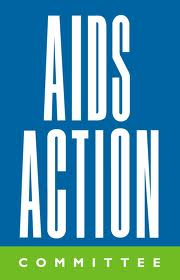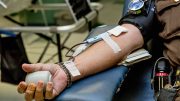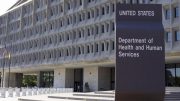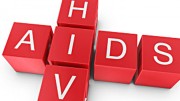Three weeks ago, the Centers for Disease Control and Prevention (CDC) released its new surveillance report, Rates of diagnoses of HIV infection among adults and adolescents, by area of residence, 2011 — United States and 6 dependent areas. In this report, CDC stated that there were an estimated 49,273 newly diagnosed cases of HIV infection during 2011 in the 50 states, the District of Columbia, and six US dependent areas.
Although gay, bisexual, and other men who have sex with men (MSM) represent an estimated 2% of the U.S. population, according to CDC, nearly two-thirds (65%) of all HIV diagnoses in 2011 were among MSM. Blacks/African Americans represent 12% of the U.S. population but accounted for 47% of HIV diagnoses. Persons of Hispanic/Latino ethnicity represent 16% of the U.S. population but accounted for 21% of HIV diagnoses.
In considering this surveillance data, it is important to note that the number of new diagnoses of HIV is not the same as the number of newly occurring infections. The reason is that many HIV-infected persons do not become aware of their HIV status until many months or years after they are infected. In fact, CDC estimates that nearly one-fifth of all Americans living with HIV do not know their HIV status. The 2011 surveillance data include people who were diagnosed with HIV or AIDS during that year, whether they were infected recently or long ago.
In 2011, the estimated rate of diagnoses of HIV infection was 15.8 per 100,000 population – a rate similar to those seen in the previous several years. However, despite the stability in overall diagnosis rates, there were some notable trends within specific demographic groups.
By transmission category: Male-to-male sexual contact accounted for 62% of all estimated reported HIV diagnoses in 2011, and an additional 2.9% were attributed to male-to-male sexual contact plus injection drug use. This means that nearly two-thirds (65%) of new diagnoses for the year were among MSM. The percentage of diagnoses in other major risk transmission categories were as follows: high-risk heterosexual contact, 27.2%; injection drug use (IDU), 7.4%; and perinatal exposure, 0.2%. The number of women in the high-risk heterosexual transmission category is nearly twice that of the number of men in this category.
Looking at transmission category and gender together, we find that 86% of all adult and adolescent female cases were associated with high-risk heterosexual exposure, while 82% of all male adult and adolescent cases were associated with male-to-male sexual (including MSM plus IDU).
By race/ethnicity: Blacks/African Americans accounted for nearly half (47.0%) of all estimated newly reported HIV cases in 2011, with Whites accounting for 28.1%, Hispanic/Latino Americans accounting for 20.6%, and all other racial/ethnic groups accounting for about 4%. The HIV diagnosis rates per 100,000 continued to be substantially higher for Blacks/African Americans (60.4), Hispanic/Latino Americans (19.5), Native Hawaiian/Pacific Islanders (15.3), and persons of multiple races (14.2) compared to Whites (7.0). Put another way, compared to Whites, HIV diagnosis rates were 8.6 times higher among Blacks/African Americans, 2.8 times higher among Hispanics/Latinos, 2.2 times higher among Native Hawaiian/Pacific Islanders, and 2.0 times higher among persons of multiple races.
By Age: More than half (54.8%) of all estimated HIV diagnoses occurred among persons in their twenties (31.5%) or thirties (23.3%). Nearly one-quarter occurred among persons in their forties (23.0%). One-sixth (17.1%) of the estimated diagnoses occurred among people 50 or older. The remaining 5% of diagnoses occurred among persons under 20, with the vast majority of those in the 15-to-19 age group.
During the 2008 to 2011 period, the rates of HIV diagnoses increased among persons aged 20 to 24; the diagnosis rates decreased among persons aged 35 to 39 and 40 to 44; and the diagnosis rates remained fairly stable for all other groups. During 2011, young people between the ages of 20 to 24 accounted for both the highest percentage of new HIV diagnoses (16.3%) and the HIV diagnosis rate 36.4 per 100,000 – more than twice the national average.
More News on the Projected Impacts of Budget Cuts on HIV Services and Research
Since the US Congress and the Obama Administration did not reach a budget agreement to reduce the Federal deficit, President Obama signed an order initiating automatic budget cuts to begin March 1.
“While the cuts technically start March 1, the true effects of the cuts will not be felt until FY2013 funding is resolved,” according to Terrance Moore, Director of Policy and Health Equity for the National Alliance of State and Territorial AIDS Directors (NASTAD). “The federal government is currently funded under a continuing resolution until March 27. Sequestration’s effects will not be felt until final funding awards are made after March 27.”
For those interested in reading more about the projected impacts of the sequestration cuts, we’ve included links to brief reports and statements by several groups:
- The Impact of Budget Sequestration on Federal Funding for State HIV/AIDS and Viral Hepatitis Programs in FY2013 (NASTAD)
- The Devastating Impact of Sequestration on ADAP in the South: Sequestration Would Leave Thousands of People without Access to Life-Saving Medications (NASTAD)
- The Impact of Budget Sequestration on the Fight Against HIV/AIDS in Black America (Black AIDS Institute)
- Sequester Cuts Threaten Life-Saving HIV/AIDS Care & Prevention Services (San Francisco AIDS Foundation)
- Sequestration Cuts Could Threaten Global HIV/AIDS Gains (Elizabeth Glaser Pediatric AIDS Foundation)
- Sequester Takes from the Poor, and Just Keeps on Taking (Housing Works)
Recent Research on HIV Health Disparities and Affected Populations
If you are interested in additional information, please visit these links to abstracts of recent research.
- The Effect of Conspiracy Beliefs and Trust on HIV Diagnosis, Linkage, and Retention in Young MSM with HIV. By J. Gillman, J. Davila, and others, in Journal of Health Care for the Poor and Underserved.
- Substance Use as a Mediator of the Relationship Between Life Stress and Sexual Risk Among Young Transgender Women. By A.L. Hotton, R. Garofalo, and others, in AIDS Education and Prevention.
- Levels and Predictors of HIV Risk Behavior Among Black Men Who Have Sex With Men. By J.A. Kelly, J.S. St. Lawrence, and others, in AIDS Education and Behavior.
- Targeting HIV Prevention Messaging to a New Generation of Gay, Bisexual, and Other Young Men Who Have Sex with Men. By M.J. Kingdon, E.D. Storholm, and others, in Journal of Health Communications.
- HIV-Infected Men Who Have Sex with Men Who Engage in Very High Levels of Transmission Risk Behaviors: Establishing a Context for Novel Prevention Interventions. By S. Wade Taylor, C. O’Cleirigh, and others, in Psychology, Health, and Medicine.
* Eric Brus is the Director of HIV Health Promotion of AIDS Action Committee. This report is produced by the Health Library of the AIDS Action Committee in collaboration with the New England AIDS Education and Training Center Minority AIDS Initiative Project. The full version is available online.
[From a News Release]








